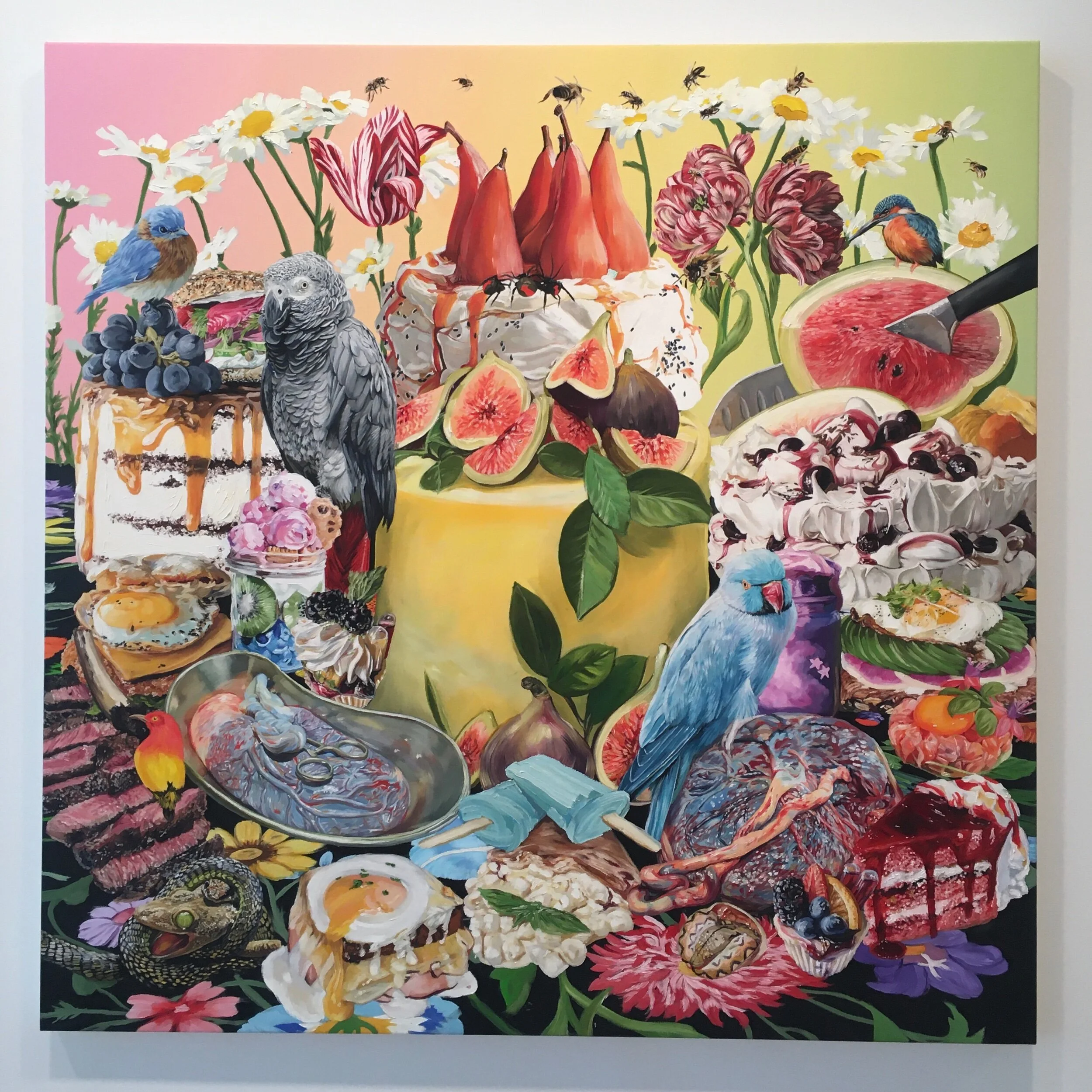A Painting for the Millennial's Palette and Palate
A few weeks ago, Artnet News posted their latest installment of Artists You Might Not Know, But Should. I was pleased to see that Brooklyn-based painter Christina Nicodema made the list this month with her paintings on view at Hollis Taggart. She’s certainly an artist to follow.
Nicodema’ s paintings seem to be a colorful combination of a food lover’s Pinterest board, your last Google search, an influencer’s savvy instagram posts, and that seventeenth-century Dutch still-life painting (with concepts of momento mori and abundance) you studied in Art History class. The artist’s well-written biography (from her website) explains that her work is about “the food chain and life-cycles from a millennial’s perspective.” I would push it a bit further and say her work is an exquisite representation of a twenty-first century still-life grounded in the art historical canon.
I spent most of my time in front of Nicodema’s, The Tower of Babel, Placenta (2019) attempting to both identify and connect the many layers of imagery “to read” the painting’s narrative. Many of the delectable foods are recognizable “on-trend” items: Spanish fried eggs; a pillowy pavlova with black cherries and chocolate shavings; avocado toast on whole grain bread with watermelon radishes topped with a fried egg and micro greens; mason jar desserts; a lightly, vanilla frosted chocolate layer-cake with caramel drizzle. Nicodema also incorporates birds with an Audubon-like accuracy such as, the plump Eastern Bluebird and elegant African grey parrot. Bees hover at the top of the canvas, pollinating daisies and burgundy and white striped parrot tulips. Then there are what appear to be two human placentas, one neatly placed in a surgical tray and clamped, while the other appears discarded and carelessly “plopped-down” on the opposite half of the canvas.
The artist has seemingly created a contemporary iconography of our culture’s “food porn.” Dutch painters before her, also crafted a visual language incorporating the desirable earthly treasures of their time including items like Chinese porcelain, exotic island fruits, or expensive tulips from their lucrative global trade routes. How would that translate, today? If you ask any pundit, avocado toast seems to be the princely millennial equivalent. Or perhaps the ultimate “luxury” item would be the saving and storage of a placenta’s stem cells? While that’s certainly a stretch of an interpretation, my mind desperately tries to understand why the artist chose to include them.
Does the painting’s title hint at the greater narrative? The biblical story of Babel ends with God punishing the human race for trying to reach heaven with a tall tower. He eliminated communication by having everyone speak a different language. Is every item on the canvas meant to represent a different language unable to communicate with the rest? Or a breakdown in communication within our food chain and consumption culture?
However elusive the painting’s underlying narrative (or narratives) may be, the composition is certainly highly organized. The lemon colored fondant cake, with its bright hue and smooth textured surface, draws the eye to the center of the canvas. Two clusters of green fig leaves then encourage the eye back downward to the periwinkle popsicles, up the blue parrot’s back, to the tip of the chef’s knife, then further up to the arch of daisies, and follows the bees’ path across the stems of poached pears. The eye is then taken down the left side of the canvas by the mirrored daisy arch, continuing downward past the layer cake, to the sliced medium-rare skirt steak, and right to the bottom of the canvas where the croque madame with a pierced yolk awaits. The cycle then continues as white cheddar mac and cheese coaxes the eye to whirl around the circular composition again — each time discovering a new detail. A true feast for the eyes.
Of Folly, Fortune, Glory, Ruin is on view at Hollis Taggart Contemporary through February 22nd and includes The Tower of Babel, Placenta along with five other paintings.
See my Instagram Post here.

